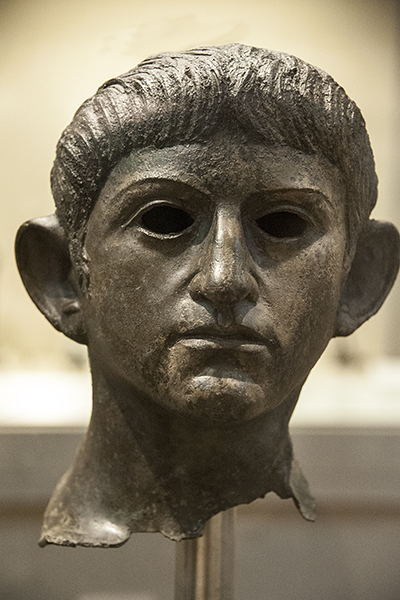
"The bitterest animosity was felt against the veterans; who, fresh from their settlement in the colony of Camulodunum [Colchester], were acting as though they had received a free gift of the entire country, driving the natives from their homes, ejecting them from their lands,—they styled them 'captives' and 'slaves,'—and abetted in their fury by the troops, with their similar mode of life and their hopes of equal indulgence. More than this, the temple raised to the deified Claudius continually met the view, like the citadel of an eternal tyranny; while the priests, chosen for its service, were bound under the pretext of religion to pour out their fortunes like water. Nor did there seem any great difficulty in the demolition of a colony unprotected by fortifications—a point too little regarded by our commanders, whose thoughts had run more on the agreeable than on the useful."
Tacitus, Annals (XIV.31)
Even though the Temple of Claudius was completely destroyed during the Boudican rebellion, its podium served as the foundation for the largest Norman keep in Britain, built by William the Conqueror a decade after his own invasion of the island a millennium later. Half again as large as the White Tower in London on which it was patterned, there was not enough stone to fill the podium entirely and its four vaults were packed with sand instead. It measures approximately 80 x 105 feet, which suggests that the temple itself was octastyle, with eight columns across the façade and eleven down the sides.

The only other reference to the Temple of Claudius is attributed to Seneca, about whom Dio comments: "Seneca himself had composed a work that he called 'Pumpkinification'—a word formed on the analogy of 'deification'" (LX.35.3). In this satire, Jupiter is speaking, as the gods debate whether Claudius should be admitted to Olympia. Seneca jibes that, instead of aspiring to divinity, Claudius should be content with the worship of barbarians. "Is it not enough that he has a temple in Britain, that savages worship him and pray to him as a god, so that they may find a fool to have mercy upon them?" (The Apocolocyntosis, VIII.3). Fishwick, however, argues that the temple was not built before the death and apotheosis of Claudius in AD 54 but decreed after his deification, in which case construction may not even have been completed before the revolt of Boudica six years later.
The initiation of a conquest of Britain was the most successful event of Claudius' reign. "Desiring the glory of a legitimate triumph, he chose Britain as the best place for gaining it, a land that had been attempted by no one since the Deified Julius." Indeed, he set a naval crown on the palace to signify that "he had crossed and, as it were, subdued the Ocean" (Suetonius, Claudius, XVII.1).
In 1907, a young boy found a bronze head of Claudius in a muddy river bed some miles northeast of Colchester, likely thrown into the river as a votive offering, Purchased by the landowner, it was exhibited eighteen months later by Sir Lawrence Alma-Tadema at a meeting of the Society of Antiquaries in London. Then, in 1979, another bronze fragment was discovered, this time a horse's hock. Given the low lead content of the bronze alloy and that both were hacked away (perhaps as booty), it is tempting to think that they were part of the same equestrian statue, although there is no certainty for such wistful association.